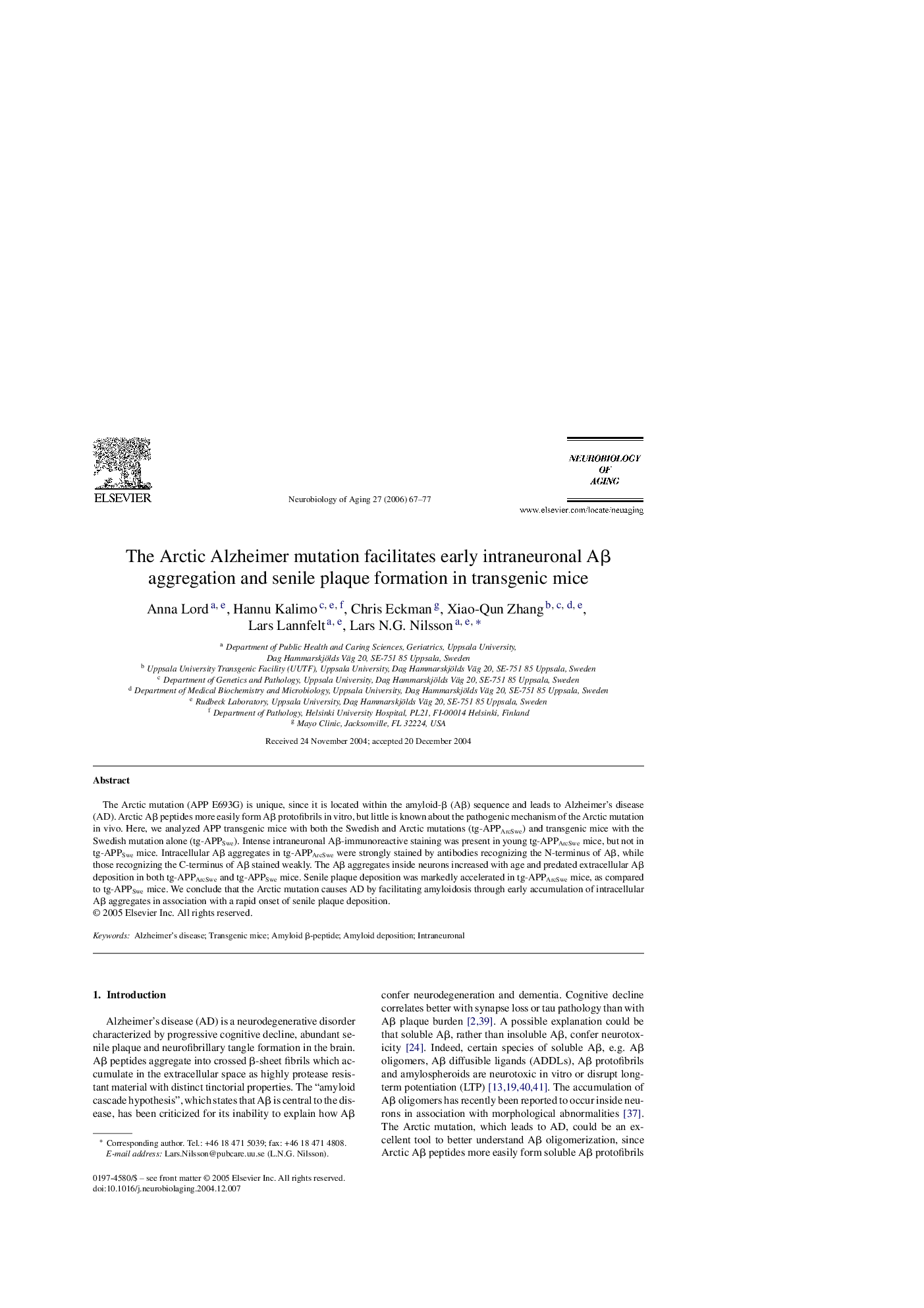| Article ID | Journal | Published Year | Pages | File Type |
|---|---|---|---|---|
| 330657 | Neurobiology of Aging | 2006 | 11 Pages |
The Arctic mutation (APP E693G) is unique, since it is located within the amyloid-β (Aβ) sequence and leads to Alzheimer's disease (AD). Arctic Aβ peptides more easily form Aβ protofibrils in vitro, but little is known about the pathogenic mechanism of the Arctic mutation in vivo. Here, we analyzed APP transgenic mice with both the Swedish and Arctic mutations (tg-APPArcSwe) and transgenic mice with the Swedish mutation alone (tg-APPSwe). Intense intraneuronal Aβ-immunoreactive staining was present in young tg-APPArcSwe mice, but not in tg-APPSwe mice. Intracellular Aβ aggregates in tg-APPArcSwe were strongly stained by antibodies recognizing the N-terminus of Aβ, while those recognizing the C-terminus of Aβ stained weakly. The Aβ aggregates inside neurons increased with age and predated extracellular Aβ deposition in both tg-APPArcSwe and tg-APPSwe mice. Senile plaque deposition was markedly accelerated in tg-APPArcSwe mice, as compared to tg-APPSwe mice. We conclude that the Arctic mutation causes AD by facilitating amyloidosis through early accumulation of intracellular Aβ aggregates in association with a rapid onset of senile plaque deposition.
